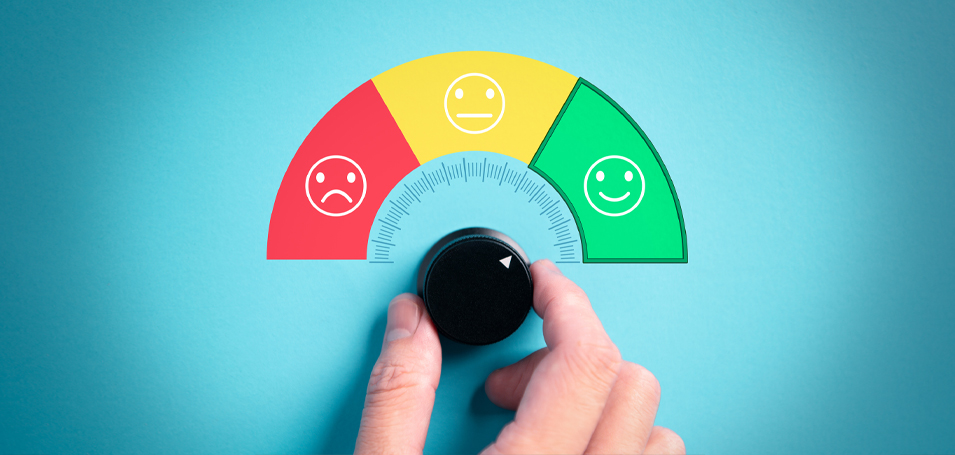John Leh from Talented Learning and Samma Hafeez from Thought Industries got together to discuss how the first experience with a product sets the tone for the entire relationship, how customer training impacts onboarding, and how it accelerates time- to-value.
This Thought Industries webinar, “How to Reduce Time-to-Value with Modern Customer Training,” may be viewed in its entirety. This article captures their expertise and insights, specifically for you.

John Leh:
We’re going to talk about time-to-value and how it impacts customer retention. We’ll talk about what those impacts are, and the whys and hows of customer training. We’re going to then take a step back, and look at our research at Talented Learning, an LMS market overview, and highlight a new category of learning technology called customer learning systems.

Then we’ll look at the connection between onboarding and time-to-value, and Samma will bring the whole topic to life.
Samma Hafeez:
For the last five years, we’ve been building the world’s most advanced learning technology based on decades of proven learning science research and best practices.
Our customer learning platform enables businesses to deliver scalable, high-impact training online throughout the customer lifecycle to drive customer acquisition, product adoption, customer retention, and time-to-value. With our platform you can bring your learning vision to life in a fully white-labeled environment that looks futuristic, sleek, and compelling.
John Leh:
Samma, time-to-value is something you have to live and breathe. Tell us how you define it, what the key aspects are, and why that’s important to today’s topic.
What is Customer Time-to-Value and Why is it Important?
Samma Hafeez:
Let’s break up time-to-value into two categories, the first being initial, or quick time-to-value, and the second being time-to-ROI value.
Initial time-to-value can be defined as the number of hours, days or weeks it takes for a user to get a critical job done that they couldn’t have completed without the use of your services or technology. Ideally, initial time-to-value should happen soon after activation.
Whereas time-to-ROI value is essentially the time it takes for your service, or technology to deliver on a customer’s overall business use case. What’s essentially is the the ROI story you present to your VP of Finance or CFO.
Time-to-ROI value can take months or even years, so it’s really important to design an onboarding and customer training program that delivers critical wins early in the customer journey.
A couple of examples of quick wins, or quick time-to-value milestones include:
- Consolidating several disparate systems into one.
- Migrating your content, and users from your previous system to your new system without the loss of any data.
- Building out actionable reports that deliver critical insights to your business.
The What and the Why of Customer Training

John Leh:
Samma did a fantastic job of identifying the two levels of time-to-value: the quick win and the ROI. To realize either of those, you need customer training. Efficiently providing training at the point of need, or in advance, is really the critical aspect of speeding up time-to-value.
While these numbers may change slightly from study to study, the proportions, and the impact, remain constant for customers that are trained:
- 68% use the products more often.
- 56% use more features.
- 87% use the product more frequently.
Higher adoption rates mean your customers get to that first win quicker.
But at the end of the day, the question is whether or not they renew? There’s a 12-point difference between those that are trained versus not trained. Achieving a 12% greater retention has a huge impact on your business.

Companies with trained customers may also see an increase in the number of users and licenses, a decrease in support costs, an increase in customer success or Net Promoter Scores, or an increase in complementary sales.
Samma Hafeez:
Most organizations today deliver training after the customer signs the contract and starts onboarding. Customer training and education should begin during the presale phase, and continue for the entirety of the customer lifecycle.
Training your buyers earlier in the buyer journey allows you to build trust, drive deeper levels of engagement, establish your brand as an authority, identify knowledge gaps, and sell more.
What we’ve found is that learning experiences offer deeper engagement than most marketing programs and nurture educated buyers who tend to be far more engaged, agreeable, and referenceable than non-educated buyers.

The key takeaway here is that you need to think about course creation with the entire customer lifecycle in mind. Your investment will lead to greater customer retention, negative churn, and reduced time-to-value.
John Leh:
Learning management systems have been around for a long time. They were originally made for administrators to manage compliance – to avoid safety risks, regulatory risks or fines – and to track training completions.
Throughout most of the first 30 years of the LMS, there were only 20 competitors at any given time. Ten of those focused on academia and about 10 would focus on the corporate space.
Those learning management systems were not designed to support external learners or anyone beyond their firewall. If your organization wanted to train customers, you had a really big problem.
The Learning Management System (LMS) Landscape Today
For years, customer training was treated more like marketing and not as a core competency. Now, with the evolution of the cloud, and SaaS solutions, the LMS marketplace has expanded to almost 800 vendors, which brings lots and lots of options, which is good and bad.
If you search on “learning management system” you’ll see hundreds of listings, and they all look the same, but they’re not.
Today, the marketplace is divided into:
- Corporate
- Academic
- Associations
- And a commercial sector.

John Leh:
Within corporate learning there are three main audiences: employees; customers and prospects, and your channel partners or suppliers. Some learning solutions provide a solution for all three. Some are just focused on a particular subset.

Customer learning has become its own unique segment that provides the technological infrastructure to make it easy to engage with customer learners.
Here are some things that are different inside a customer LMS that you won’t see inside of employee LMS:
- The customer LMS is learner-focused from day one. 100% of the effort is in engaging those voluntary customer learners to reduce time-to-value.
- Awesome content that’s relevant, designed for them, adapted to them, and helps them get that initial task done. It’s also the tool to create that content.
- Strong ecommerce because in many cases you want to charge for the courses, or certification programs, or perhaps your customers have many learners.
Additionally, the customer learning LMS must be 100% mobile-responsive because your customers want to access content from any device, any browser, anywhere in the world.
Social learning is important because it’s a constant source of information and feedback from your customers. That gives you an edge in developing and delivering better training, and better application of LMS technology.
There’s not a scenario where you want your customers and their users going into an enormous online library, and search and search like it’s Amazon to find the course that teaches the information or the skills they need.
Your system has to adapt based on what that learner and other learners have done, and be smart enough to recommend and get you to the right spot immediately.
The way that happens is through the integration with your CRM, like Salesforce, or HubSpot, because all the customer and prospective customer interactions happen in a CRM. When that’s integrated seamlessly with a customer LMS, or now more generally known as a customer training platform, it allows you to create customer personas and to drive customer learning journeys based on the type of user they are.
You can even deliver the learning right into the software apps. Don’t make the learners go to a formal learning environment, but bring the learning into the environment where your customers are operating every day.
Last, there are the analytics, which are hugely important. With a customer learning platform you have the metrics from training and completion, which can be combined with CRM data to give you a pretty clear picture of how effective you’ve been as a customer training business and where you need to go. That’s the road to the time-to-ROI value.
That’s how the LMS went from administrative behemoths to these nice, powerful, sleek, modern e-commerce systems.
The Critical Relationship Between Time-to-Value and the Customer Onboarding Experience
Samma Hafeez:
Let’s re-center the discussion around the relationship between time-to-value and onboarding. Time-to-value is really a measurement of success during the onboarding process and a leading indicator of churn.
The longer it takes you to deliver value, the less likely you are to retain a customer and recognize revenue. A modern online learning platform can help you accelerate time-to-value within the onboarding cycle.

At Thought Industries, time-to-value guides our training philosophy. We try to understand where our prospects are and where they want to be by capturing baseline performance data, and understanding which business or behavioral changes delivered by our technology can drive growth for their organization.
We spend a significant amount of time in success planning during the sales cycle to speed up the product activation process, to curate irrelevant onboarding and deliver a training program that helps teams get their job done faster, better, and easier.
Success planning also allows us to focus on outcomes right out of the gate, which speeds up time-to-value, and allows us to set appropriate expectations around what our technology can, and can’t do.
What Successful Onboarding Looks Like with Customer Training
The time-to-value clock starts ticking right when the contract is signed. Value must be delivered earlier than the “go live” date, which might take weeks, or months. The longer it takes to deliver value, the less likely a customer will have an ROI story to take back to management.

On Day Zero, your customer is eager to get started, so it’s essential to design an efficient product activation process to sustain momentum. A modern customer learning platform can buy you time while your sales and onboarding teams engage in an internal handoff and knowledge transfer.
“Kickstart” training can also deliver immediate value to your users while you prepare for the official customer kickoff. I recommend using the kickoff to validate the success plan that was created during the sales cycle, and agree on a set of quick wins that are going to lift and shift your customer’s business.
The kickoff should also be used to identify the distinct personas that you’re going to be onboarding and training, so that your team can curate an effective and relevant training experience. The focus should be on outcomes.

A modern customer learning system enables your organization to deliver a step-by-step training experience that can be delivered in a scalable manner to multiple users simultaneously, and doesn’t compromise on quality or depth.
The more personalized and relevant your training, the more likely learners are to engage with your content, and adopt the key facets of your product.
No one wants to be passively trained anymore. Learners today are looking for dynamic learning experiences that are fun, practical, easy to consume, and help do their job. They want training that tells them why they should be doing something, not just how to do something.
Sequence Onboarding Based on Your Customer’s Desired Business Outcomes
Rather than front-loading training, I believe it’s best to deliver training where and when your users need it based on the outcomes they’re looking to drive, or the job that they’re looking to get done.
Most of us today want to be taken directly to the information we need when we need it.

Your users have a range of responsibilities. Training should enable a learner to become less path-dependent over time, and allow them to gradually make improvements, and adjustments to the way that they do their jobs. Curate a sequence of learning events, and exercises that map to the persona of the learner, and deliver a relevant outcome-centered experience.
Training should be a channel for positive transformation. Training has to deliver results, and it needs to deliver those results quickly.
Measure Customer Training Impact and ROI

Data, and analytics are front and center in how we measure the performance of our organizations today. And that’s no different in the learning technology universe.
One of the key advantages to having a modern customer training system is your ability to measure the ROI, impact of your training program, and make adjustments where necessary.
Certifications can be a great way to incentivize engagement. Most of us are looking to bring something noteworthy to our next internal performance evaluation. We find that certified users are more likely to become super-users, ultimately evangelizing your technology.

We also find that accounts with certified users are less likely to churn because they’ve been able to map your products back to their use case. By monitoring learner behaviors such as time spent in course, or drop-off rates, and asking learners for feedback, you can efficiently allocate resources to optimize your learning delivery.
Assessments are a great way to also measure the efficacy of your training program and identify areas where you might provide additional support to drive stronger adoption. Integrating your learning system with your CRM, or business intelligence tools can allow you to measure real business outcomes, and decide where to improve your training and onboarding program.
The continuing education of your customers is vital for growth.
Training is an ongoing cycle that evolves and matures as your customers evolve, and certainly, as your product evolves. A modern customer learning system can help you scale your continuing education efforts and deliver a regular cadence of wins to your customers.
Learners can consume online training on their own time and at their own pace. You can send users to an online destination on demand. The best systems allow you to embed training directly into your product so that you don’t need to send them away to a different universe. You can bring training to users rather than bringing users to your training.
The key takeaway is that a customer learning platform can take the guesswork out of your current onboarding and training approach, and allow you to build a proactive, and predictive trading program.

John Leh:
As part of the Talented Learning show podcast series, I ask just every person that I interview, what advice they would give to help ensure a successful customer education program. Almost to a person, they say that it all starts with that customer.
It’s even more true in customer learning because of the dire consequences of not meeting that time-to-value objective.
It is of paramount importance in the development of your programs to constantly get sanity checks from your customers and to understand how well it’s working. Not just data, but an anecdotal perspective so that you can continue to change, and provide more value.
We’ve covered a lot of ground today: time-to-value; how it impacts customer retention; and how that impact drives all different kinds of business improvement metrics.
We also talked about the learning management landscape, and the good news that you have options to affordably enter the customer learning market with all the technology and tools that you need at your fingertips to make this happen in a professional, credible, and effective way.
It removes all the technological hurdles, which allows you to focus on the content, and providing the most value to your customers, helping them onboard, and achieving that time-to-value in the most efficient way.
And then, prove the ROI of your customer learning efforts so that you can continue to grow and expand those efforts to the growth, and competitiveness of your organization.
Samma Hafeez:
I’d like to add one last thought. We think the road to success, to increasing engagement and reducing churn, is dependent on finding a customer training provider that is willing to work in partnership with you, to understand the complexity of your business, how you need to grow, and how you need to scale.
It’s not just what the technology can do, but the support you get over the long term.




